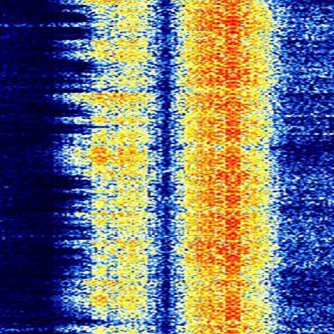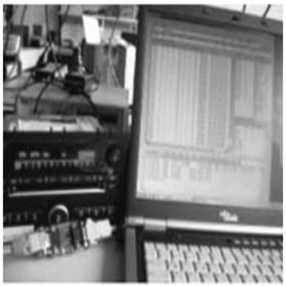Products Category
- FM Transmitter
- 0-50w 50w-1000w 2kw-10kw 10kw+
- TV Transmitter
- 0-50w 50-1kw 2kw-10kw
- FM Antenna
- TV Antenna
- Antenna Accessory
- Cable Connector Power Splitter Dummy Load
- RF Transistor
- Power Supply
- Audio Equipments
- DTV Front End Equipment
- Link System
- STL system Microwave Link system
- FM Radio
- Power Meter
- Other Products
- Special for Coronavirus
Products Tags
Fmuser Sites
- es.fmuser.net
- it.fmuser.net
- fr.fmuser.net
- de.fmuser.net
- af.fmuser.net ->Afrikaans
- sq.fmuser.net ->Albanian
- ar.fmuser.net ->Arabic
- hy.fmuser.net ->Armenian
- az.fmuser.net ->Azerbaijani
- eu.fmuser.net ->Basque
- be.fmuser.net ->Belarusian
- bg.fmuser.net ->Bulgarian
- ca.fmuser.net ->Catalan
- zh-CN.fmuser.net ->Chinese (Simplified)
- zh-TW.fmuser.net ->Chinese (Traditional)
- hr.fmuser.net ->Croatian
- cs.fmuser.net ->Czech
- da.fmuser.net ->Danish
- nl.fmuser.net ->Dutch
- et.fmuser.net ->Estonian
- tl.fmuser.net ->Filipino
- fi.fmuser.net ->Finnish
- fr.fmuser.net ->French
- gl.fmuser.net ->Galician
- ka.fmuser.net ->Georgian
- de.fmuser.net ->German
- el.fmuser.net ->Greek
- ht.fmuser.net ->Haitian Creole
- iw.fmuser.net ->Hebrew
- hi.fmuser.net ->Hindi
- hu.fmuser.net ->Hungarian
- is.fmuser.net ->Icelandic
- id.fmuser.net ->Indonesian
- ga.fmuser.net ->Irish
- it.fmuser.net ->Italian
- ja.fmuser.net ->Japanese
- ko.fmuser.net ->Korean
- lv.fmuser.net ->Latvian
- lt.fmuser.net ->Lithuanian
- mk.fmuser.net ->Macedonian
- ms.fmuser.net ->Malay
- mt.fmuser.net ->Maltese
- no.fmuser.net ->Norwegian
- fa.fmuser.net ->Persian
- pl.fmuser.net ->Polish
- pt.fmuser.net ->Portuguese
- ro.fmuser.net ->Romanian
- ru.fmuser.net ->Russian
- sr.fmuser.net ->Serbian
- sk.fmuser.net ->Slovak
- sl.fmuser.net ->Slovenian
- es.fmuser.net ->Spanish
- sw.fmuser.net ->Swahili
- sv.fmuser.net ->Swedish
- th.fmuser.net ->Thai
- tr.fmuser.net ->Turkish
- uk.fmuser.net ->Ukrainian
- ur.fmuser.net ->Urdu
- vi.fmuser.net ->Vietnamese
- cy.fmuser.net ->Welsh
- yi.fmuser.net ->Yiddish
What Does RDS Stand For?

"RDS" stands for "Radio Data System" and it allows FM broadcasters to send far more than just an analog audio signal out over the air waves. Using a 57 kHz "subcarrier," stations can transmit digital RDS data for reception by RDS-equipped FM tuners. This technology opens up a whole new range of conveniences and help to the listener with RDS reception capability. RDS began in Europe where it is now very successful. RDS is also increasingly popular in the Far East and now is making substantial headway in North America. In fact, over 700 radio stations in the United States, most of them in major metropolitan markets, now broadcast RDS information on a regular basis.
Just what kind of additional information can you expect? That depends on what the broadcaster transmits and what your tuner can pick up. Here’s a master list of all the RDS services that might be available. You’ll see that we’ve divided them into two categories: Static and Dynamic.

RDS "Static" services include:
Program Service Name (or PS for short): This simply displays a name of call letters instead of the broadcast frequency. With more and more stations identifying themselves with names like "MIX 106," "WNYC-FM," or "JAZZ 88," it’s a no-brainer to see how even this one aspect of RDS service makes finding your favorite broadcast much easier!
Program Type Code (PTY): This identifies a particular type of broadcast (Rock, Jazz, Sports, Talk, News, Classical, etc.) So far, 24 categories have been defined and assigned but the RDS system has reserve capability built in so that emerging styles of broadcasting won’t be left out. The advantage here is that most RDS-equipped tuners let you scan available broadcasts by program type so you can find what you want quickly. Also, when a station changes its format (from Country to Easy Listening, for example), it’s very easy for that station to transmit a new RDS "flag" that will automatically update your RDS-equipped tuner.
Program Identification Codes (PI): This is one of the rarely-seen "hidden" RDS features that lets you keep in touch with your favorite broadcasts even when you’re traveling. Technically speaking, PI is a four-digit hexadecimal code based on a station’s individual call letters. It tells your RDS tuner what signal it’s receiving at any given time (frequency, PTY code, etc.) You’ll see how RDS uses the PI information when you read Alternate Frequency (AF) immediately below.
Alternate Frequency (AF): If PI is one of RDS’ "back office" functions, AF is what you’ll see in action all the time. AF (perhaps better identified as Alternate Frequency Switching), automatically returns your FM tuner to the strongest signal carrying the program you were originally listening to when the original broadcast gets too weak to receive clearly. This little bit of magic is particularly useful when you’re traveling longer distances by car. The way it works is this: The original RDS broadcast would contain a coded list of all the alternate frequencies carrying the same information (NPR or syndicated shows are prime candidates here, of course). When the original broadcast faded into uselessness, the RDS circuitry would instantly search all the alternate frequencies for the strongest, most useable signal and automatically switch to it without any work on your part. In theory, you could drive the width of the country without retuning your radio at all.
Traffic Program (TP): This symbol alerts you to the fact that the station you’re listening too regularly broadcasts special traffic information. You can search for TP stations so you’ll always have that extra edge as you’re commuting or driving on that long vacation. Think of TP as the "road sign" for Traffic Announcement (TA) listed in "Dynamic" services immediately below.

RDS "Dynamic" services:
Traffic Announcement (TA): This is the active side of TP capability. TA even allows you to program some automotive tuners to constantly monitor TP stations and tune them in automatically if a special announcement is being made -- even if you’re already listening to another broadcast, a cassette, or a CD at the time. This guarantees up-to-the-minute information to make your trip easier.
Radio Text (RT): This feature allows a broadcaster to send up to a 64 character message that could scroll across your radio’s display, things like sports scores, song titles, artist or album names, even advertisements.
Clock Time (CT): An RDS-equipped station broadcasts a time and date synch signal once a minute. Your RDS-equipped receiver picks it up and automatically resets itself even if you’ve never even looked at the clock before. RDS is also smart enough to figure out Daylight Savings Time and different time zones.
Emergency Alert System (EAS): PTY code # 31 (see Program Type Code in the "Static" list above) has already been reserved for emergency use. If your RDS tuner senses an emergency code, it will flash an ALERT message. In addition, most automotive units will pause a CD or cassette, switch to the EAS broadcast , and increase playback volume to a preset level to make sure you’re paying attention.
Program Item Number (PIN): No, this won’t get you into the master account at an ATM machine, but your broadcaster could assign special codes to individual programs than would let your tuner know when that program was on. An RDS-style PIN could trigger a recording device to record something you want even if you’re not there.
Transparent Data Channel (TDC): This is one of the commercial RDS "add-ons" that you’ll probably never use directly. A TDC signal broadcast from an existing transmitter can control an electronic billboard and change its message continuously throughout the day. TDC capability is primarily an additional potential revenue source for an RDS-equipped FM station.
Radio Paging (RP): Another commercial application. FM transmitting towers can be used for lots of things as well as an inexpensive local paging service?
This isn’t a complete list but it gives you an idea of the enormous versatility you can expect from RDS services as they expand across the country.
If you would buy a Radio Data System, please feel free to contact us: [email protected]

